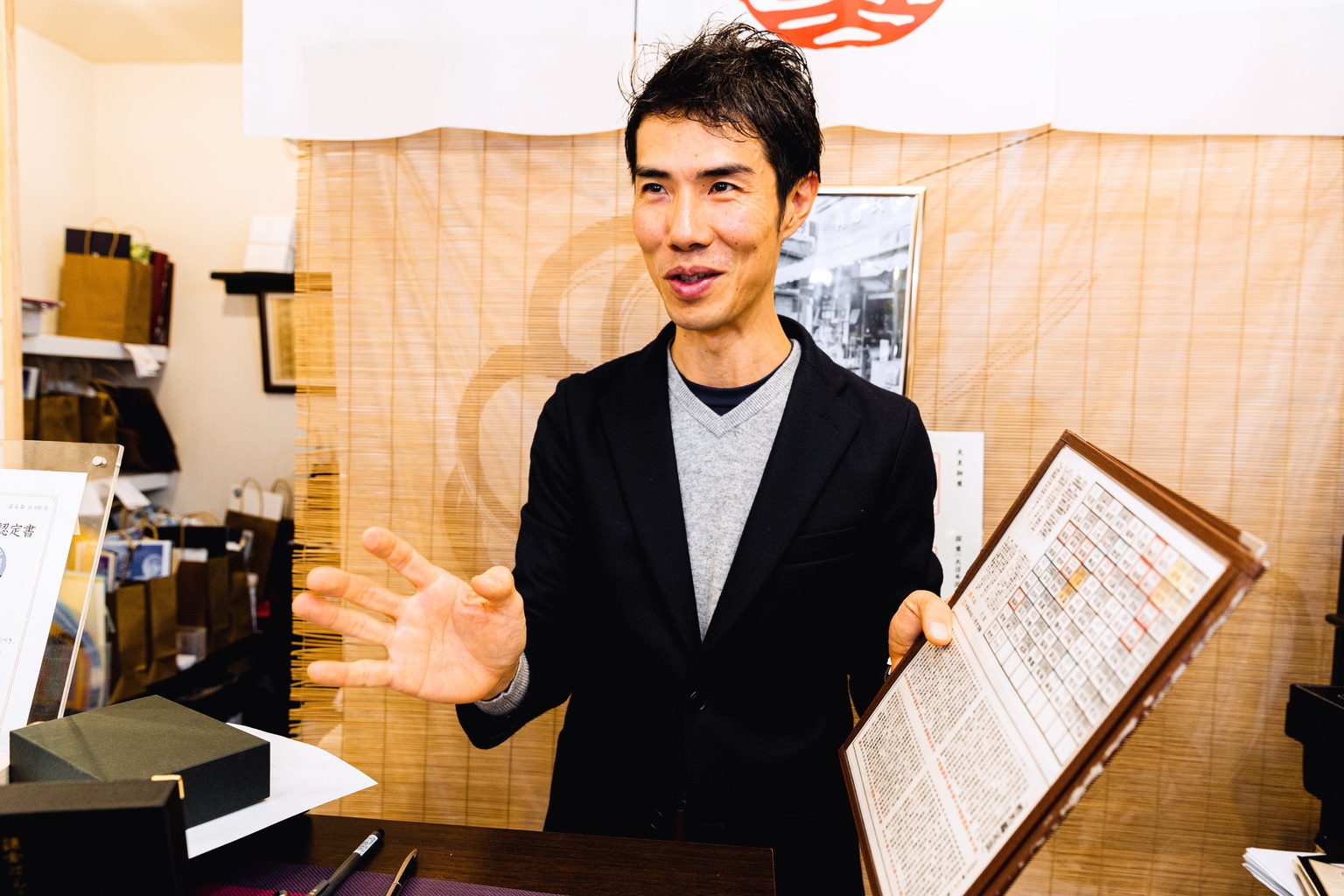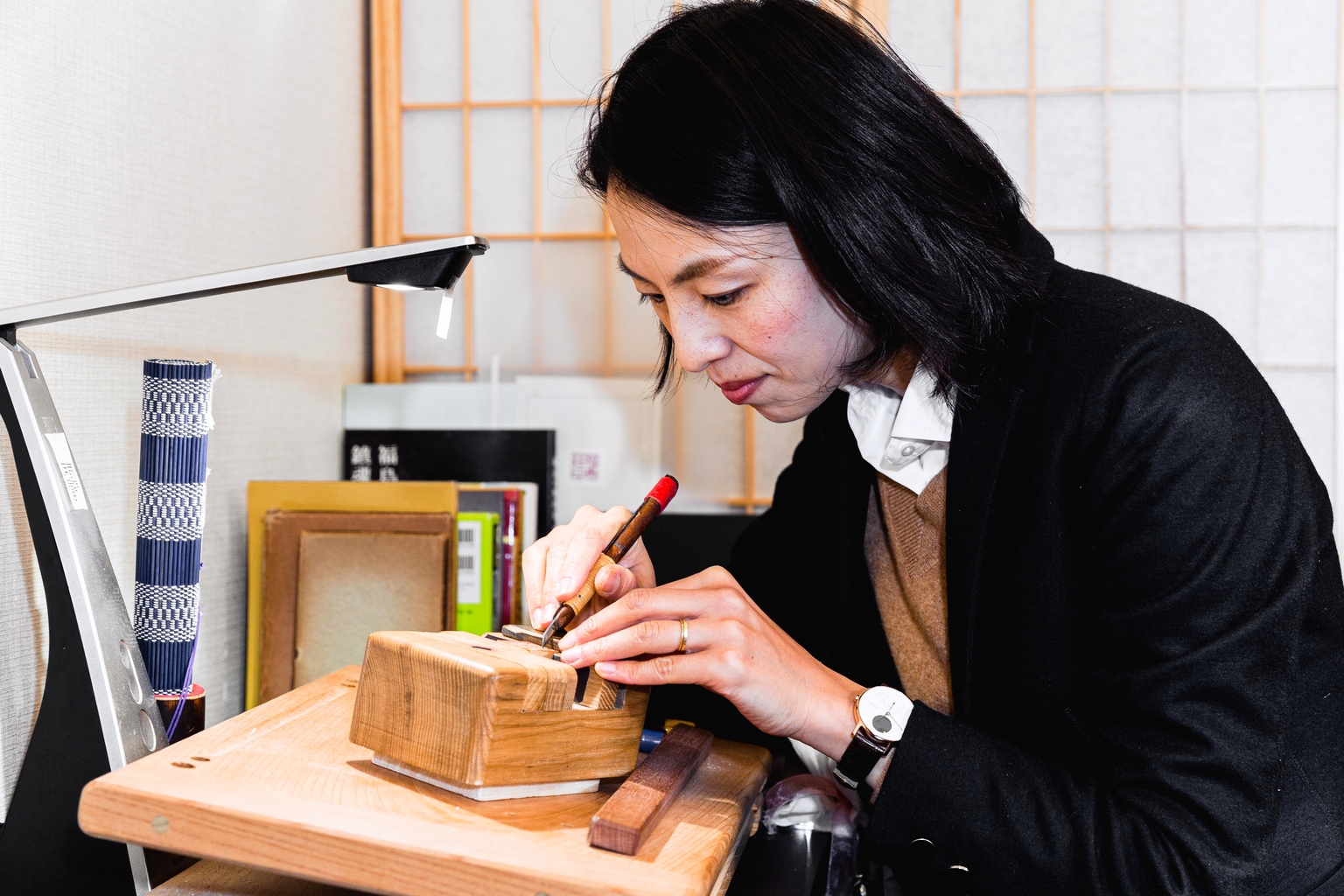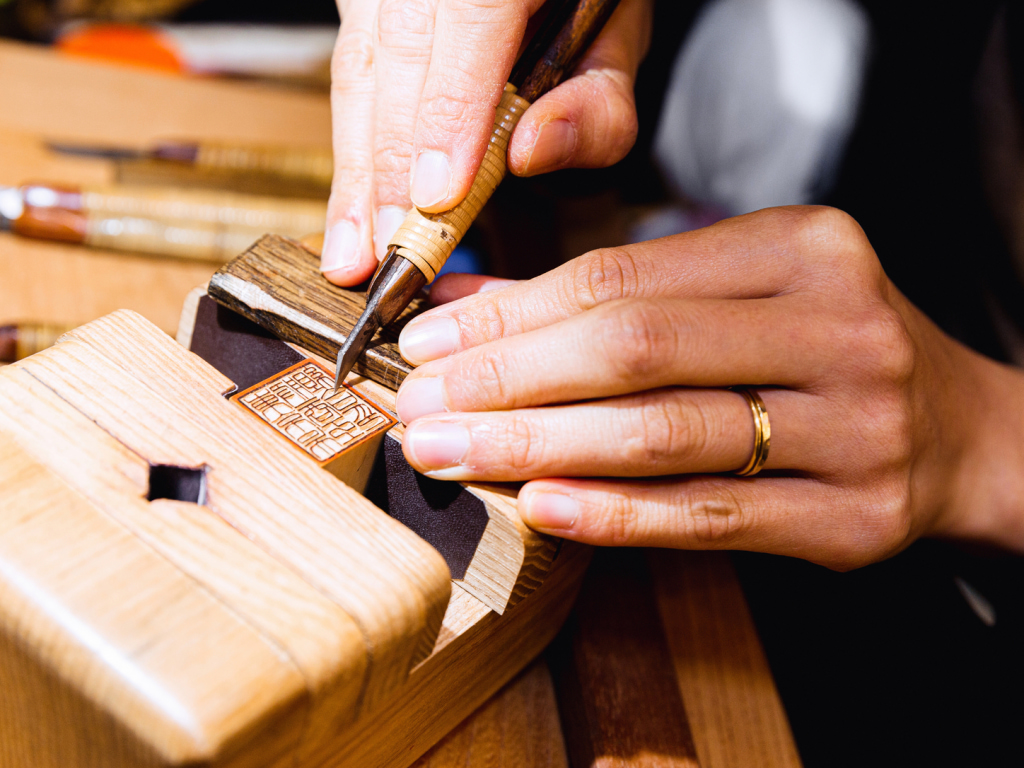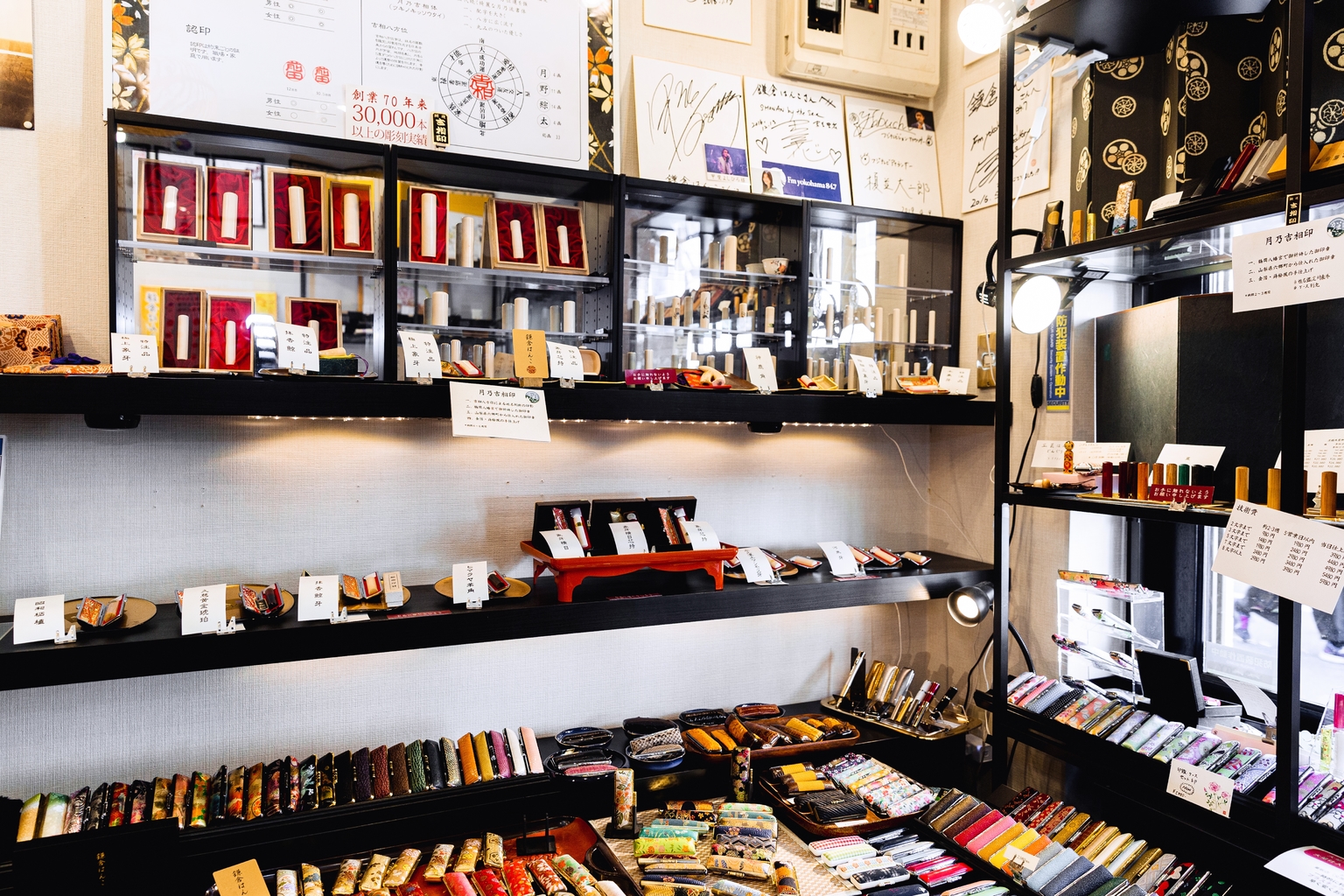Steps from Kamakura Station, in an area alive with passersby, sits a quiet shop whose proprietors are busy fulfilling a dedicated mission: to reverse what they see as the pending extinction of the hanko (name seal).
Kamakura Hanko is run by married duo Mitsuhiro and Chieko Tsukino, both talented hanko artisans who are passionate about their craft. They hope to pass down an understanding regarding the significance of hanko not only to Japan’s younger generation— but also to non-Japanese individuals living in or visiting the country.

The Tsukinos are among only a handful of young professionals among the 1,000-some total members of the nationwide association for certified hanko artisans, of whom most are advancing in age.
“To lose this culture would be unbelievably sad”
“It’s a dying art,” Mitsuhiro laments regarding the history of hanko, a nearly 2,000-year-old tradition in Japan that originally has roots in the Middle East. “To lose this culture would be unbelievably sad.”
He explains that people now commonly use digitized signatures, and if even they do use a hanko, they often just purchase a mass-produced plastic seal at a hundred yen shop. “In addition to ignoring the hanko’s rich cultural history, using this kind of generic tool as a jitsuin (officially registered seal) for a serious transaction could potentially lead to fraud.”
Designing Your Own Unique Hanko
Visitors to Kamakura Hanko are offered personalized attention in the creation of their own unique hanko — the operative word here being “unique.” The Tsukinos’ consultation allows customers a profound glimpse into a fascinating tradition that relies upon an intricate balance of numerous elements to provide just the right hanko for each individual. It is a complex equation that takes into account not only a person’s name and personality, but also the specific aspects of their life that they wish to emphasize in order to invite good fortune: love, money, family, success, material wealth and human relationships, among others.
Working closely with each customer to carefully select the desired font and size, the Tsukinos then exercise exact precision when carving the hanko to be sure that the positioning and thickness of every stroke in every character is reflecting the specific desired attributes.

“We take into account the total balance of the characters when designing each hanko,” Mitsuhiro says — an astonishing fact when considering that this takes place within a space only around 12-18 millimeters in size. “A hanko is an expression of someone’s soul, so it is very important to make sure it represents that person accurately,” he adds.
Also of primary consideration is the stroke count in the characters used for the hanko, with the total number assigned a meaning that is considered fundamentally positive or negative. While many parents in Japan carefully consider this sort of stroke geometry when naming their newborn children, circumstances can shift later in life — such as when one acquires a hanko following a name change via marriage.
“A hanko is an expression of someone’s soul”
“In cases where the new stroke count totals an inauspicious number, we can make adjustments through our carving method,” Mitsuhiro explains. He adds that due to the sacred understanding of the hanko’s function within Shinto beliefs, customers can also feel at ease even if their total stroke count is not considered fortuitous.
He quickly points out, however, that while some shops prioritize the hanko’s more spiritual elements — promising longevity or success if the right seal is procured — Kamakura Hanko prefers to emphasize the tool’s cultural history and social significance. “The city of Kamakura has its own fascinating connection to hanko, as samurai here would historically stamp their seals before departing for battle as an oath to protect the Shogunate,” he explains.

Customers may choose from over 30 materials for their hanko, including acrylic, wood from the forests of Kagoshima, white or black buffalo horn, stone, or ivory (the last of which the shop maintains a special license to sell only existing stocks — and forbids exports — due to elephant exploitation).
“Certain hanko materials match best with one’s birthdate and year on the lunar calendar,” Mitsuhiro explains. “But perhaps most important is how the material feels in your hands; how you connect with it.”
Foreigners creating a hanko may opt to use their name in katakana
Foreigners creating a hanko may opt to use their first and/or last name in katakana, or Japanese characters corresponding to their name’s pronunciation, whose meaning the Tsukinos will explain while assisting with selection. As consultations offered to non-Japanese speakers will not reach the same level of depth due to the limitations of language, hanko enthusiasts may wish to bring along an interpreter — or to think ahead regarding the design and personal attributes they’d like their hanko to reflect.
In addition to assistance with selecting the hanko’s material, font, design and carrying case — the last of which has been designed by Yamanashi prefectural artisans — the consultation also includes a cultural and historical explanation. The Tsukinos will then begin carving your hanko, a process taking anywhere between 30 minutes to three hours, depending upon its level of complexity — thereby providing a perfect time to explore the alluring city of Kamakura.
Handmade Japanese Seal Experience
This foreigner-friendly workshop teaches you about the history and culture of hanko in English. Participants get to design their own seal and choose the materials you like for both the stamp and the case. Fun fact: Kamakura Hanko’s seals have officially been recognized by Kagoshima Prefecture as the recommended souvenir to represent Kamakura.
The fee is ¥7,300 per person for an acrylic hanko, with those crafted from other materials fetching anywhere from 10,000 to several hundreds of thousands of yen. Many people in Japan splash out to buy their loved ones a deluxe hanko to mark special life occasions. And with the holidays coming up, why not consider doing the same thing for yourself or another?
To reserve this workshop, visit the Kamakura Hanko shop website, scroll down, and click on “workshop”: www.kamakurahanko.com/japanesesealhanko
Tsukino Kisso Seal
For those who are a little superstitious, you might like to consider ordering one of these specially made, hand carved seals from Kamakura Hanko. The Tsukinos will look at your name in kanji and judge whether it’s considered lucky or unlucky based on the number of strokes in each character. They can subtly adjust the number of strokes through their design to create a “lucky” name. For this seal, they use only the highest quality materials from Yamanashi and all materials are blessed at a shrine beforehand. You’ll also receive a handmade hanko case. These seals take about one month to make and cost ¥39,980 each (international shipping is offered).
To place an order, go to www.kamakuraseal.com/
Photographs by Solveig Boergen
Sponsored Post
Updated On June 25, 2021










